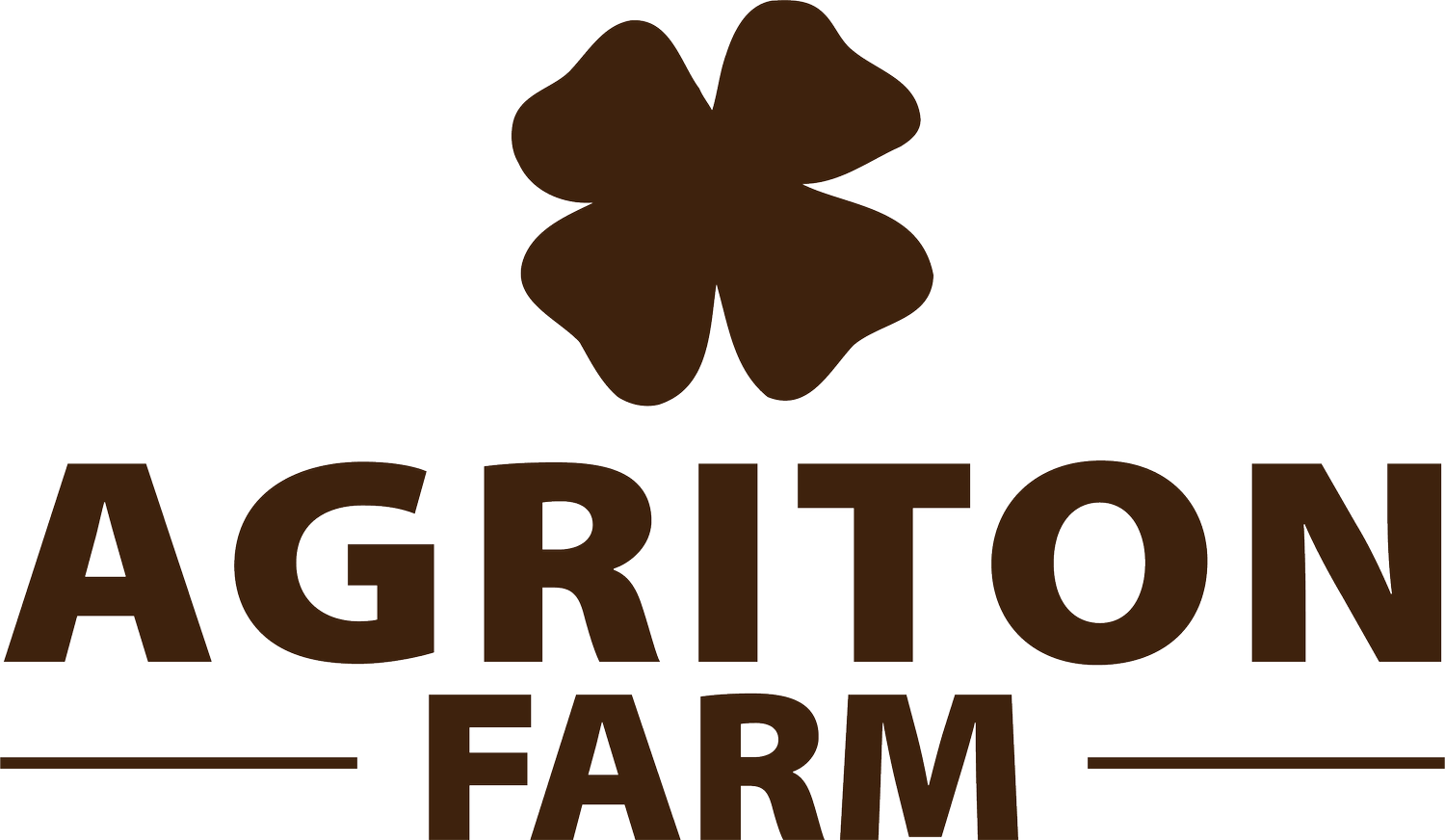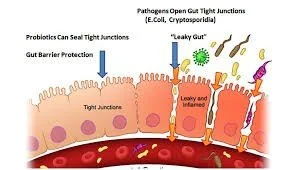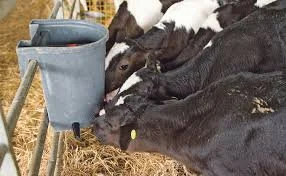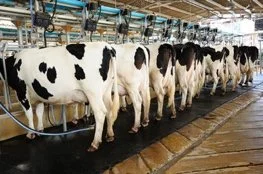Immunity: How Effective Microorganisms interact with immune status, now and in the future
Immunity and microbes
Within the industry, it is well documented that the biggest financial output for farmers is feed. Reducing involuntary culling and maximising potential for youngstock to become part of a breeding herd, achieving third, fourth lactation are key factors to mitigate economic losses and be more profitable on farm.
Focussing on where this starts, or indeed stops are worth looking at in more detail. When the calf hits the ground – this is the beginning, the window of opportunity to rear a future healthy heifer. One who gains weight, fights infection, copes with stressors during weaning, reaches target MW, is fertile and produces a healthy calf, naturally and without complications.
Nutrition at this stage is critical and will determine the future of this calf from essential weight gain, greater number of class 2 ovarian follicles for increased fertility, mammary gland development for higher yield capacity and optimum immune status essential for the early life stages, and beyond.
In other conversations, this window of opportunity to create a worthy herd addition begins long before the calf appears. Feeding the transition cow and understanding dry cow nutrition is critical to gain optimum body condition score (BCS), meet essential nutrient and energy demands for not only the skeletal development of the calf but longevity of the dam.
Disease within the dam at time of conception and gestation is associated with offspring performance, with greater incidence of disease as a calf through to first lactation. Similarly, calves born to dams with high somatic cell count (SCC) have demonstrated greater age at first calving (AFC), increased mean SCC at first and second lactation with lower milk yield.
A cycle of optimum nutrition to support each critical life stage, thus supporting vigour and immune status and implementing best practice based on the understanding of one’s system, calves, heifers, and cows can maintain profitable and healthy within the herd.
Make it stand out
Looping key factors in immune support development
How can we utilise microbes to maximise immunity on farm?
Best practice will look different based on each farm and their individual system, but immunity is established based on good hygiene management, correct stocking density, cleanliness of equipment and a good understanding of optimal health and wellbeing.
Passive immunity is the first opportunity for calves as they are born immunologically naïve and rely on important antibodies from colostrum, either direct from the dam or via alternative methods on farm. Their growth and development rely on this as often weight gain is deprioritised over gut immunity in young calves.
The mechanism is not yet fully understood but scientific research suggests the early development of a more diverse gastrointestinal tract can prime the immune system, enhances liver function, and can impact future productivity. A major source of bacterial colonisation is colostrum containing species from Lactobacillus, Bifidobacterium, Staphylococcus, E. coli, and Streptococcus uberis within the GIT of the calf. Lactic acid bacteria i.e., Lactobacillus, Bifidobacterium spp., multiply very rapidly, fermenting sugars following colostrum intake contributing to the production of acids e.g., lactic, propionate.
Rumen programming is a concept in which early-life nutrition can be used to manipulate the microbiome of calves to achieve long-term optimal production. Whilst genetics do play a role within the calf microbiota, host physiology, diet and environmental impacts all play a key role.
Scours in calves is associated with a low richness of faecal bacterial diversity, greater intestinal permeability leading to a dysbiosis within the gut which can exacerbate pathogenic-induced diarrhoea. Lactobacilli are the dominant bacteria within the digestive system during the first week of life, considered useful due to their ability to break down proteins, carbohydrates and fats contributing to increased nutrient absorption. Bifidobacterium spp. is also a dominant bacterium, and this can aid in the establishment of an adequate immune response, increasing production of essential white blood cells (T cells) needed to attack pathogenic bacteria as well as preventing immune reactions against harmless antigens, including those who make up part of the microbiota, ultimately producing healthy calves.
Stress and dysbiosis within the gut
When a calf is born, the first few days, even weeks of life can be quite challenging. They must quickly adapt to their environment, and cope with the stressors this brings.
This could be housing, new feeding equipment, different stock people, and external stressors such as vaccinations, disbudding whilst also faced with disease pressure and a vulnerable immune system.
When stress occurs, it can result in an imbalance (dysbiosis) within the gut, triggering immune responses such as acute inflammation. This can often be observed in the calf by potential scours, reduced feed intake and general lethargy.
Microbial communities within the gut are finely tuned and naturally remain relatively balanced. However, factors outside our control such as stress, can disrupt this balance. The gut wall relies on something called tight junctions – it is the calves natural defence barrier, warding off pathogenic bacteria, undigested feed particles and prevents sites of attachment to unfavourable microbes.
During times of stress, cortisol is released (a stress hormone) which will also impact the natural balance within the gut and microbes. Extended periods of stress will alter motility within the gut, impacting digestion and therefore creating environments more favourable to pathogens, simultaneously reducing the growth of commensal (healthy) bacteria. Stress will also affect the production of mucus – an integral part of maintaining gut integrity – and those tight junctions.
These factors combined highlight the importance of maintaining gut health and supporting healthy bacterial colonies to not only benefit health and growth but to help reduce the threat of disease and infection, considerably lowering welfare on farm.
This illustrates the importance of probiotics (healthy bacteria) to support gut integrity
IMMUNITY, let’s break it down
I = IgG
Calves are born without an immune system and therefore management post-birth is a critical time to ensure the calf remains healthy, strong and develops an immune system which can cope with her environment and future stressors such as transport, vaccines, dis-budding etc. Colostrum contains vital IgG (immunoglobulin) antibodies from the dam which offer protection during this vulnerable stage of life. Due to the complex structure of Immunoglobulins, they cannot be digested within the abomasum and are absorbed into the bloodstream from the small intestine in their original form (via a process known as pinocytosis, where intestinal cells are able to engulf the protein molecules from the colostrum but only for 24 hours post birth).
Colostrum also contains microbes, in the form of bacteria, viruses and fungi which are also transferred from dam to calf and these species offer increased protection against pathogenic growth such as E. coli and salmonella spp. This microbial colonisation is the first step in creating a healthy, abundant and diverse microbiota which can support the calf through pre-weaning, and beyond. Colostrum also increases hindgut abundance of probiotic species such as Lactobacillus and Bifidobacterium whilst simultaneously decreasing the growth of pathogenic bacteria such as E. coli due to decreased pH.
M = Mammary Gland Development
Feeding management and strategies during pre-weaning are key factors in mammary gland development, essential for long-life production within dairy herds. Studies have reported this nutritional phase can determine MG growth rate and that this rate is quicker than the remaining body. Growth of the MG can be reduced when weaning early (56 vs 91 d) with MG size at 100 d being 5% less in those weaned at 56 d of age versus those weaned at 91 d of age. Calves fed restricted MR versus ad libitum had delayed growth at 62 d of age including the MG and parenchyma, Niwinska et al. (2022) concluded despite an overall increased intake of starter concentrate in the restricted group and increased microbial development, these positive elements are not efficient or effective during first 80 days of life, where development and growth appears most critical, as well as bovine MG being at its most active during the first 3 months of life (Capuco and Akers, 2010).
The immune system requires a substantial amount of energy once established to continue offering defence and includes the production of antibodies. Studies report the immune system of cows use 1 kg of glucose within a 12-hour period, once the system is fully activated (Kvidera, S.K. et al., 2017; Kvidera, S.K. et al., 2016). Yeast supplementation, such as Saccharomyces cerevisiae (offered as a fermented product) have been shown to increase WBC (white blood cells), as well as increased VFA which increases available energy via microbial glucose.
Setting up calves for their future in the milking herd
M = Mastitis
The rumen/mammary gland axis is a relatively new scientific concept which supports gut-dysbiosis facilitating the development of mastitis. If there is an imbalance (dysbiosis) within the GIT this can compromise the mucosal barrier within the intestine which will allow opportunistic bacteria to reach the mammary gland (via blood circulation) which can have a negative impact on mammary gland health. It is also suggested SARA can drive mastitis and those suffering from SARA are predisposed to pathogen-induced mastitis.
There are studies which observe a connection between SARA-associated mastitis and altered microbial profiles and when inflammation occurs within the gut, induced by dysbiosis this can further aggravate microbial populations by promoting the growth of facultative anaerobes (shown in mice) specifically Enterobacteriaceae which increase oxygen content.
As well as impact on production, this disease can present a significant issue on farm in terms of animal welfare. The cost per case is variable from farm to farm, depending on system, and treatment etc but it is suggested to range from £149 to £250 per case (NADIS, national animal disease information service).
During milking, risk of spread of bacteria such as Staphylococcus aureus is high and can be managed with good hygiene practice, offering protection to the teats and minimising cross-contamination. Environmental mastitis originates from those bacteria living within the cow's environment, such as E. coli and Enterobacter species. Host-health and immune status affect the disease outcome and these are both closely linked to the microbiome within the gut and therefore disruption which can cause inflammation. This is the first step in pathogenic dominance as more facultative microbes thrive, increasing oxygen and the release of bacterial toxins such as lipopolysaccharide (LPS).
U = Umbilical Cord
The aim of dipping this area is to encourage rapid healing, encourage safe detachment and prevent pathogenic growth resulting in infection. A topical application has long been practiced on farms to safely protect umbilical cord from known infections such as navel-ill causing significant health issues including arthritis. Such infections within the stump cause swelling, redness and pain, hindering the separation process presenting further complications.
Early research on iodine has observed the need for prolonged contact time for the antiseptic benefits to be achieved (Gamage, 2003) and the disinfectant properties can be minimised when in contact with organic matter. The bacterial activity of iodine can be compromised or even inhibited when it encounters organic matter, which in terms of calves at time of parturition could be blood, pus or faecal matter, resulting in the organic matter binding to the iodine significantly reducing its impact.
Existing research on application of alternative solutions to reduce umbilical infection shows little evidence that supports iodine as the most effective – with other antiseptic alternatives achieving the same response in terms of healing, decrease in pathogenic growth whilst offering a less-harsh influence on the tissue.
Reducing pH can encourage the healing of wounds without further irritation to tissue. Often chronic wounds have an alkaline pH which, prolonging the healing process. The application of Lactic Acid bacteria can encourage a more acidic pH encouraging quicker healing – important with umbilical trauma and high risk of pathogenic infection during vulnerable life stages.
Lactic acid bacteria are one of the most studied microorganisms with some strains producing bacteriocins, a form of polypeptide displaying antimicrobial effects against other bacterial species, with anti-inflammatory properties, supporting immune function.
N = Nutrition
Early life nutrition plays one of the most important roles within the growth and development of healthy calves. It can impact its longevity in the herd, future milk yield and resistance to disease. Calves are at their most efficient during the pre-weaning stage so ensuring the right nutrients to meet their huge demand for energy is critical at creating a future-healthy heifer. The opportunity to manipulate the diet allows for increased microbial diversity and abundance, which offer benefits to the host immunity as well as feed intake and weight gain. Studies who observed calves treated for scours during pre-weaning did not meet the 43-55% of MW due to lower intakes and weight at weaning. Increased intake through weaning stages has also shown to increase viable ovarian follicles and improved reproductive health – a key factor in avoiding culling because of fertility problems.
Cows obtain nitrogen (protein) via diet, a small part of crude protein passes through the rumen as undegradable protein and absorbed in the small intestine or excreted in the dung. The majority of CP is available to the rumen microbes for growth, and energy however the rate of microbial N-utilisation is dependent on many factors such as pH, energy content and absorption capacity of the rumen epithelium. Therefore, a part of N influx is incorporated into microbial protein whereas the remaining part is microbially converted to non-protein-N (non-protein nitrogen) in the form ammonia (NH3) and ammonium (NH4), peptides and amino acids.
The cow can absorb amino acids and peptides from the microbial protein in the small intestine whereas the NPN-compounds are absorbed by the rumen epithelium. The amino acids and peptides can be utilised by the cow as valuable protein sources but absorbed NH3 and NH4 is transported in the blood stream to the liver. Here, the ammonia is detoxified, yielding urea in urine and milk urea or secreted into the rumen across the rumen epithelium or via saliva. The recycled urea is converted by epithelium-bound, ureolytic rumen bacteria to CO2 and NH3. The latter, in turn, can be utilised by NH3-assimilating microbes for the metabolism of microbial protein.
Early life nutrition
A critical window of opportunity to maximise growth, development and immune status
I = Integrity of Gut Wall
As well as IgG and other immune benefits, colostrum offers compounds which stimulate development of enterocytes (intestinal absorbative cells) in young calves which can assist the maturation of the enterocyte (gut cell) lining allowing absorption and digestion of vital nutrients. The GIT is the largest immune organ within the body and the mucosal immunity is the first defence against pathogenic bacteria. The maturation of intestinal lining works alongside the establishment of enteric immunity with the bioactive compounds (found in colostrum) to be utilised not only by the calf for growth but to “jump start” immune development within the GIT. Maintaining effective immune responses that can detect, prevent and eliminate pathogenic bacteria whilst simultaneously tolerating commensal bacteria is a key part of maintaining gut health.
As well as antibodies, the milk also contains cytokines (a small protein, which carries messages between cells which can trigger an immune response) and immune cells, such as WBC (leukocytes) and lymphocytes (B and T cells). Anti-inflammatory cytokines prevent inflammation within the gut which allows an environment where commensal bacteria can colonise and maintain tight junctions.
The mucosal barrier is formed by goblet cells, producing mucin and mucous and this undergoes a huge maturation shortly after birth. The mucosal layer is colonised by the microbiota and the mucus layers offer protection to the epithelial layer, the main barrier against pathogenic bacteria. Early colonisers such as Streptococcus and Enterococcus utilise the available oxygen to create an anaerobic environment which is required for strict, and beneficial anaerobes to populate and stabilise the rumen environment.
Intestinal Barrier Structure
T = True Stomach (abomasum)
The abomasum is often referred to as the true stomach and those resembling a monogastric system with enzymatic digestion. During sucking (via teat, or dam) the muscle contracts and forms an oesophageal grove where colostrum can bypass the rumen into the abomasum. At this stage, the rumen is not able to digest milk due to being under-developed and does not host necessary microbial populations.
Within the abomasum, enzymes such as rennin and pepsin are responsible for the breakdown and digestion of milk protein – and this process can vary based on what milk or milk replacer the calf is consuming. Milk sugar (lactose) and milk fat are broken down via specific enzymes and are absorbed through the small intestine and used as vital energy for calf growth and development.
Abomasum
The largest chamber in the young calf
Y = Yield
There are many factors that play a role in milk yield production such as breed, nutrition, environment, intake, growth and disease. Pre-weaning nutrition and average daily gains (ADG) are recognised at having a key impact on mammary gland development and greater supply of milk replacer can increase MG growth by 1.9 to 3.9 when MR intake increases dry matter (DM), crude protein (CP) and metabolizable energy (ME) combined with a later post weaning phase which can all positively impact future milk production. There is substantial scientific evidence which shows increasing volume of colostrum during the first few hours of life combined with increased nutrient intake throughout pre weaning results in increased milk yield production during first lactation.
Sufficient intake of good quality colostrum into the abomasum at the correct time not only ensures the initiation of good gut microbiota in the small intestine but specific species of Lactobacillus and Bifidobacterium is also required to prevent pathogenic growth at a crucial time in immune development.
Many studies have found greater pre weaning and post weaning intake resulted in each additional KG of ADG between birth and breeding produced 3281 kg more at first milk lactation. One study has observed an increase of 100g/d of ADG during pre-weaning can result in an expected increase of 155kg FLM yield.
They’re your future investment
EM-munity
〰️
EM-munity 〰️
I hope you enjoy reading and if you have any questions, or would like a specific topic covered here on our Knowledge Hub, please get in touch.
Introducing Ted, my trusty sidekick
(and also enjoys a costa, from time to time)









